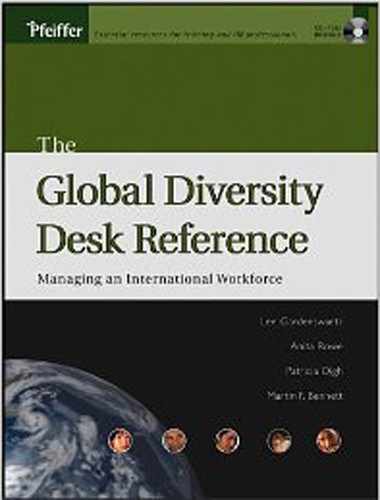3.5. USING INTERPRETERS IN A GLOBAL ORGANIZATION
Even for multilingual employees, there will be times in global business communication when the use of interpreters is called for. A common misstep regarding interpreters is to call on a bilingual manager within the company to help in that capacity. When this happens, the manager is disempowered and relegated to a service role, possibly losing status or face by serving in that function.
Making effective use of an interpreter is a skill that needs to be developed. Check your own use of interpreters by filling in the "Use of Interpreters Checklist." The checklist items can be used as guidelines to help managers and employees in your organization select appropriate interpreters and make the best use of their assistance.
The more of these items you incorporate into your interactions, the more effective you will be in communicating with the assistance of an interpreter.
3.5.1. Suggestions for Using the "Use of Interpreters Checklist"
Objectives
To increase effectiveness in using interpreters
To assess one's effectiveness in using interpreters
Use of Interpreters ChecklistDirections: Think of times when you have used an interpreter recently. Then respond to the items on the checklist based on your behavior.
| ||||||||||||||||||||||||||||||||||||||||||||||||||||||||
To identify approaches for improving communication with the help of an interpreter
Intended Audience
Global managers and employees who make use of interpreters
Staff preparing for assignments or projects where the use of interpreters will be necessary
Time
45 minutes
Materials
Copies of the "Use of Interpreters Checklist"
Easel, flip-chart pad
Markers
Directions
Ask members to share some of their experiences in using interpreters, both successful and unsuccessful, and what they've learned that has worked.
Explain that effectively using interpreters is a communication skill that most of us could improve.
Ask staff members to respond to the checklist, reflecting on their own experiences with interpreters.
Once members are finished, explain that the more checks in the "Usually" column, the more effective one is. However, the most important information may be in those items marked "Rarely," as these indicate potential areas of improvement.
Lead a discussion about any suggestions that were surprising or that stimulated questions.
Ask small groups to discuss those guidelines that are seldom followed, charting obstacles that prevent them from being followed.
Have groups brainstorm ways to overcome obstacles listed. For example, one obstacle may be not knowing qualified interpreters in each location. Actions that might be suggested are to have each location compile a list of highly rated interpreters used by the organization, then make lists available to staff.
Have each member make a commitment to taking one action to increase effectiveness in using interpreters.
Questions for Discussion/Consideration
Which guidelines were surprising?
Which do you have questions about?
Which are most difficult to follow? Why?
What could the organization do to help?
What could you do to increase your effectiveness in using interpreters?
Caveats, Considerations, and Variations
Some of the guidelines may be out of the control of individual staff members. In such cases, have the group discuss who in the organization they need to involve in order to get the help they need.
This tool may be used to coach managers and high-potential employees whose work requires the use of interpreters.
